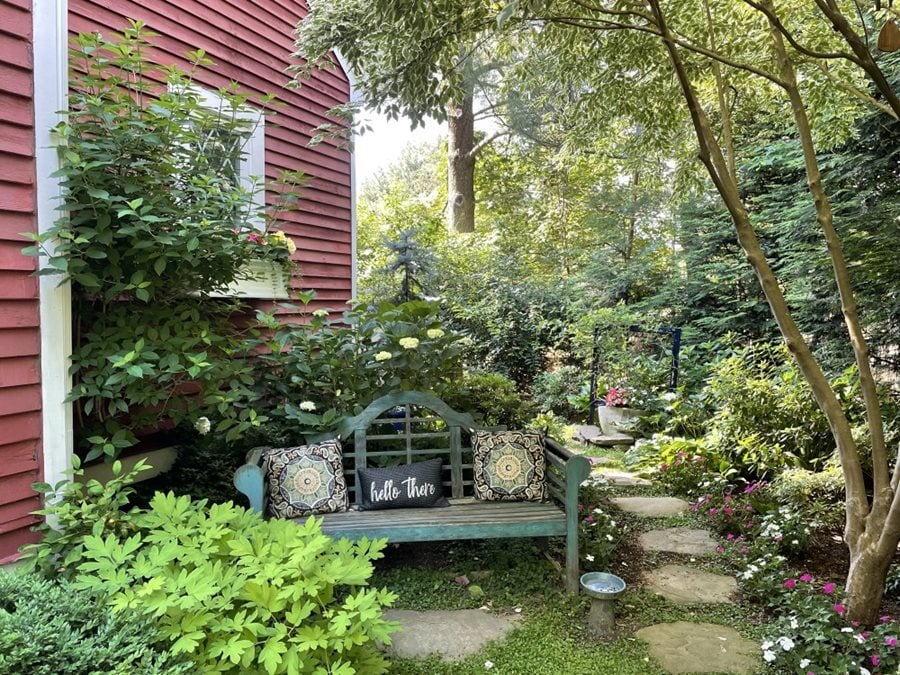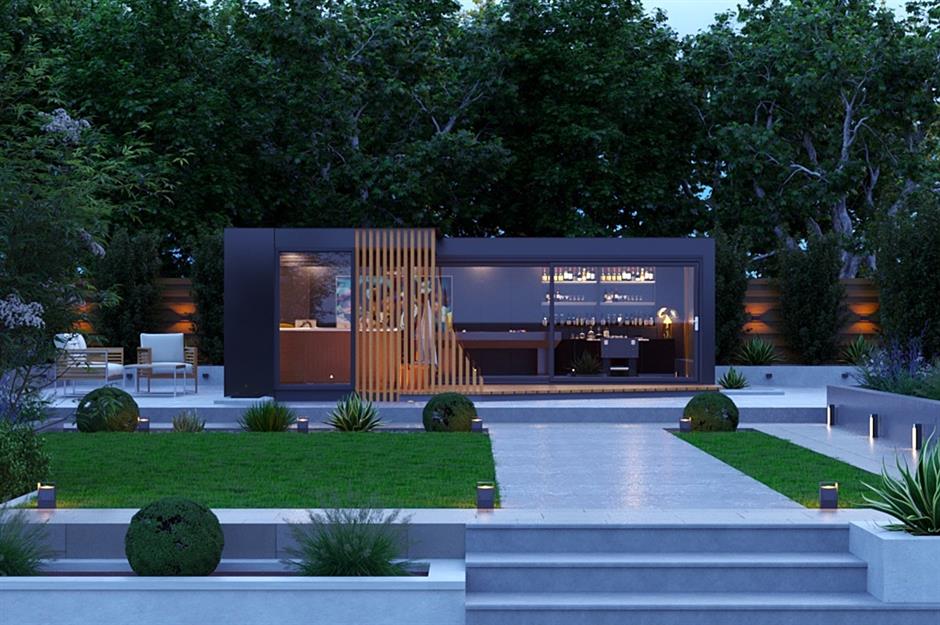If you're thinking of creating garden rooms, conservatories, outhouses and garden offices the size limitations can determine if you need planning permission. Here's a list the most common dimensions that may force you to request permission for planning.
Planning permission is normally required for a detached outbuilding in the event that its total area including outbuildings that are already in place and the area around the house exceeds 50 percent.
Height restrictions:
Single-story structures. The eaves' maximum height can't exceed 2.5 meters.
A building that is less than 2 meters away from the property's boundary should not exceed 2.5 metres in size.
Floor Area:
Floors that are greater than 30 square meters might require building regulations approval even in cases where planning permission isn't needed.
Proximity to Boundaries
If the structure exceeds 2.5 meters in height and is located within 2 meters of the line, then planning permission is required.
Building Use
The size of garden rooms is not the only thing to consider the purpose of their use could influence whether planning permission is needed. If the property is utilized as a residential or as a commercial space for instance, it is more likely that planning permission will be needed.
Permitted Development Rights:
Permitted Development Rights, which permit certain kinds of work without a complete planning request, have size and condition restrictions. These rights may vary depending on whether the property is within a conservation area.
Conservatories and Extensions
For a single-story rear extension the maximum depth for a single-story rear extension is usually 4 meters for detached houses and 3 metres for semi-detached or terraced houses. They can be raised to 8 metres or 6 meters as per the Neighbourly Consultation Scheme, if certain conditions are met.
The height of a single-story rear extension must not exceed 4 meters.
Side Extenders
For extensions on the sides, width and height must not exceed four meters.
Volume Restrictions:
In certain areas (such as Conservation Areas and Areas of Outstanding Natural Beauty) A building addition which increases the dimensions of the initial residence by more than 10% (10 percent) or 50 cubic meters (whichever number is greater) is required to obtain planning approval.
Front Extensions
Extensions that extend past the front of the original house facing the street will usually need planning permission.
It's important to inquire the local planning authority since rules can differ in accordance with the local council and circumstances of the property. In addition, even the planning permission doesn't have to be sought the building regulations approval could still be necessary for structural and safety reasons. Follow the best do garden rooms need planning permission for more recommendations including garden buildings , copyright garden office, outhouses, garden rooms brookmans park, how to lay decking on soil, garden out house, garden outhouse, garden outhouse, garden rooms hertfordshire, garden rooms near me and more.

What Planning Permission Is Required For Gardens, Etc. In Regards To Neighbourhood Concerns?
When deciding if planning permission is necessary to construct a garden office garden rooms or conservatories as well as outhouses and outhouses in the area, it is important to determine if neighbors are worried. Here are a few important factors to think about privacy and overlooking
If the proposed structure is likely to be viewed from afar which could result in the loss of privacy the planning permission will likely be required. This is to ensure that the new structure does not negatively impact the living conditions of nearby residents.
Overshadowing and loss of light
A planning permit is typically required when a building could result in significant light loss or overshadowing of neighboring properties. The local authority for planning will assess the impact on the amount of sunlight and daylight that is available to neighboring houses.
Noise and Disturbance
If the garden room or extension is to be used for activities that generate noise (such as the home office that has clients visiting, a workshop or a music space) Planning permission is required. This ensures that the noise is not too loud and does not disturb the neighborhood.
Character and Visual Impact
The design, appearance and the size of the building should be consistent with the neighborhood's character. The planning permission is required in order to make sure that the proposed construction is attractive and does not harm the aesthetics of the neighborhood.
Boundary Proximity
Planning permission is required for buildings that are built close to the property's boundary in particular when the structure is taller than 2,5 meters or less than 2 meters. This is to resolve any potential disputes or impact on adjacent properties.
Shared Access Rights and Rights of Way
If the construction is affecting rights of access or shared access points Planning permission is required to ensure that these aren't obstructed or impact.
Restrictions of neighbors
Planning applications may be discussed with residents of the area. If there objections from neighbors the authority for planning will take into account these issues when deciding if to approve the application.
The impact of this on property values:
Although not the only consideration modifications that may impact the value of homes near by could affect the need for a planning permit. Local authorities will take into account these impacts when deciding.
Covenants and Deed Restrictions:
There may be covenants or deed limitations on the property that need to be followed, regardless of planning permission. These legal agreements could determine what is allowed and not be built, impacting the harmony of the neighborhood.
Construction Disturbance:
Planning permission might be granted to address issues regarding disturbances caused during the construction phase, such as dust, noise, and traffic. To minimize the effects of construction on neighbors, conditions may be imposed.
Impact on the Infrastructure
If the structure is causing an additional burden on the local infrastructure (e.g., drainage or parking, roads, etc.) Planning permission will ensure that the impacts are analyzed and addressed accordingly.
Community Consultation
In certain situations there may be a need to seek out a larger community especially when it comes to more complex or controversial projects. It permits a more democratic process of decision-making because it takes the viewpoints of the local community into account.
Summary: Concerns about the neighborhood's surroundings play a key role in deciding if it is appropriate to approve planning permission for garden offices or conservatories, outhouses, or garden extensions. It is important to make sure that the proposed development is not a negative impact on the neighborhood's living conditions as well as privacy levels and light, sound or overall character. A prompt consultation with the local authority as well as engagement with neighbors can resolve these concerns. This will allow for the approval process. View the top garden extensions for website advice including garden rooms near me, garden rooms, what size garden room without planning permission uk, out house for garden, best electric heater for cabin, copyright garden room, insulated garden rooms, best heater for log cabin, ground screws vs concrete, out house for garden and more.

What Planning Permission Are You Requiring To Build Garden Rooms, Etc. Terms Of Design And Appearance?
The design and appearance of the structure will determine whether or not planning permission is required for the construction of garden offices, conservatories or outhouses, as well as gardens rooms. Here are the main factors to consider: Comply with Permitted Development Rights:
Planning permission might not be needed if the structure proposed falls within your permitted development rights. There are however specific design and style criteria that must meet.
Size and Scale
The scale and size of the structure to be constructed must be in proportion to the property's existing size and the surrounding buildings. For structures that are larger than the permitted development rights, planning permission is needed.
Height and Massing
The height of the new structure and its mass should be consistent with surrounding structures and the land. Planning permission is usually needed for buildings that are over the height limit or are incompatible with the area.
Materials and finishes
The selection of materials and finishes should be in harmony with existing buildings and structures around them. If the materials chosen are not compatible with the character and appearance of the area the planning approval may be required.
Design Harmony
The design must be in sync with the style of existing structures and the property surrounding it. The design of the new structure must be in harmony with the local features and aesthetics.
Roof Design
The roof's design should be in harmony with the style and appearance of the structure or property. The roof's design could require planning permission if it is not in keeping with the local style and the character.
Fenestration, Windows and Doors:
The design and placement of doors and windows should complement the property and its surroundings. The proposed fenestration may require a permit for planning in the event that it is not compatible with the local style.
Facade Treatment:
Facades must be designed in a manner that is compatible with the surrounding structures and existing properties. Planning permission might be required in the event that the proposed facade design is not in keeping with the local culture and style.
Landscaping:
The landscaping must complement the existing properties and buildings. Planning permission might be required if the proposed landscaping does not fit with the local culture and style.
Visual Impact
The new structure should have minimal visual impact on the surrounding. The proposed structure may require approval for planning if it creates a negative aesthetic impact on the surroundings.
Heritage and Conservation Areas:
In the case of a property situated within an area designated as heritage sites or for the preservation of its natural beauty, the design and aesthetic standards may be more stringent. If a building that is being constructed doesn't meet these standards, planning permission might be needed.
Guidelines for Architectural and Planning
Local planning authorities frequently issued specific guidelines on design and appearance that must be adhered to. Planning permits may need to be sought out when a proposed building doesn't comply with the guidelines.
Summary: Planning permission for conservatories and garden spaces as well as outhouses, office buildings or extensions, is usually dependent on the design the appearance and the size of the structure proposed. It is crucial to speak prior to constructing with local authority to decide if planning permission is required and ensure that your style is in line with local character guidelines. Take a look at the most popular insulated garden buildings for website tips including garden outhouse, outhouse building, outhouse buildings, garden outhouse, garden office electrics, garden office electrics, insulated garden rooms, outhouses for garden, outhouse uk, insulated garden rooms and more.
